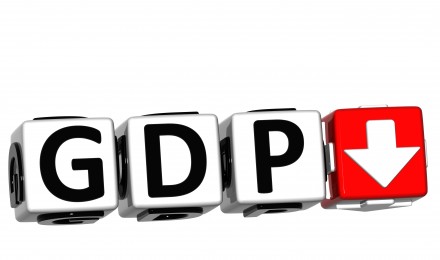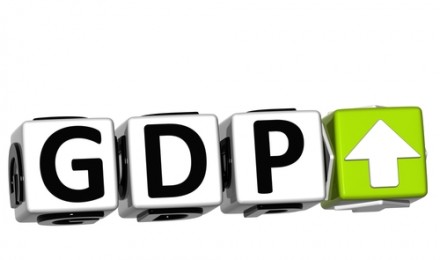On March 29, the Bureau of Economic Analysis released the report on the Gross Domestic Product, 4th quarter 2011 and annual 2011. As the third report, it was the first to include corporate profitability numbers.
The numbers in the report indicated good news for average consumers, although the news for corporations and shareholders was not as positive. According to the report, real gross domestic product (GDP) increased at an annual rate of 3.0 percent between the third quarter and the fourth quarter in 2011. This matched the second estimates for the overall number. Imports, which are subtracted when calculating the GDP, also increased.
This increase and acceleration of the real GDP was largely driven by personal consumption expenditures (PCE), private inventory and nonresidential fixed investment and exports. Some of this residential fixed investment was offset by government spending and negative contributions from the federal government
The demand numbers remained unchanged, but were incrementally increased for domestic purchasing with an annualized increase of 1.1 percent. This too matched prior estimates for the fourth quarter. Final sales to domestic purchasers, excluding net exports, rose more than expected to a revised 1.3 percent as compared to the 1.1 percent predicted in the second estimate. Component changes were also modest, but reflected a small downward revision in regards to inventory investment and a small upward revision of goods PCEs.
According to the report, profit slowed in every quarter of 2011. GDP growth in profits before tax slowed down to 4.2 percent, as compared with 25 percent in 2010. This means profit growth has slowed in every quarter of 2011. The growth in dividends slowed as well: in 2010, it was 18.9 percent and in 2011 it was down to 10.3 percent.
Two sectors where profit growth was strongest include machinery firms and fabricated metal products, and this growth was largely driven by tax breaks encouraging investment and by changes made following the Great Recession. With the tax breaks expired now, it is likely that this growth will slow going forward.
This data was largely as expected based on prior estimate and confirms most analysts’ opinion about the current state of the economy. It also indicates that corporations are not having success in increasing output without increasing employees, suggesting that it will be necessary to increase hiring in order to increase profits. This presents some positive news for job seekers and is supported by the job growth numbers.
On March 29, the Bureau of Economic Analysis released the report on the Gross Domestic Product, 4th quarter 2011 and annual 2011. As the third report, it was the first to include corporate profitability numbers.
The numbers in the report indicated good news for average consumers, although the news for corporations and shareholders was not as positive. According to the report, real gross domestic product (GDP) increased at an annual rate of 3.0 percent between the third quarter and the fourth quarter in 2011. This matched the second estimates for the overall number. Imports, which are subtracted when calculating the GDP, also increased.
This increase and acceleration of the real GDP was largely driven by personal consumption expenditures (PCE), private inventory and nonresidential fixed investment and exports. Some of this residential fixed investment was offset by government spending and negative contributions from the federal government
The demand numbers remained unchanged, but were incrementally increased for domestic purchasing with an annualized increase of 1.1 percent. This too matched prior estimates for the fourth quarter. Final sales to domestic purchasers, excluding net exports, rose more than expected to a revised 1.3 percent as compared to the 1.1 percent predicted in the second estimate. Component changes were also modest, but reflected a small downward revision in regards to inventory investment and a small upward revision of goods PCEs.
According to the report, profit slowed in every quarter of 2011. GDP growth in profits before tax slowed down to 4.2 percent, as compared with 25 percent in 2010. This means profit growth has slowed in every quarter of 2011. The growth in dividends slowed as well: in 2010, it was 18.9 percent and in 2011 it was down to 10.3 percent.
Two sectors where profit growth was strongest include machinery firms and fabricated metal products, and this growth was largely driven by tax breaks encouraging investment and by changes made following the Great Recession. With the tax breaks expired now, it is likely that this growth will slow going forward.
This data was largely as expected based on prior estimate and confirms most analysts’ opinion about the current state of the economy. It also indicates that corporations are not having success in increasing output without increasing employees, suggesting that it will be necessary to increase hiring in order to increase profits. This presents some positive news for job seekers and is supported by the job growth numbers.







